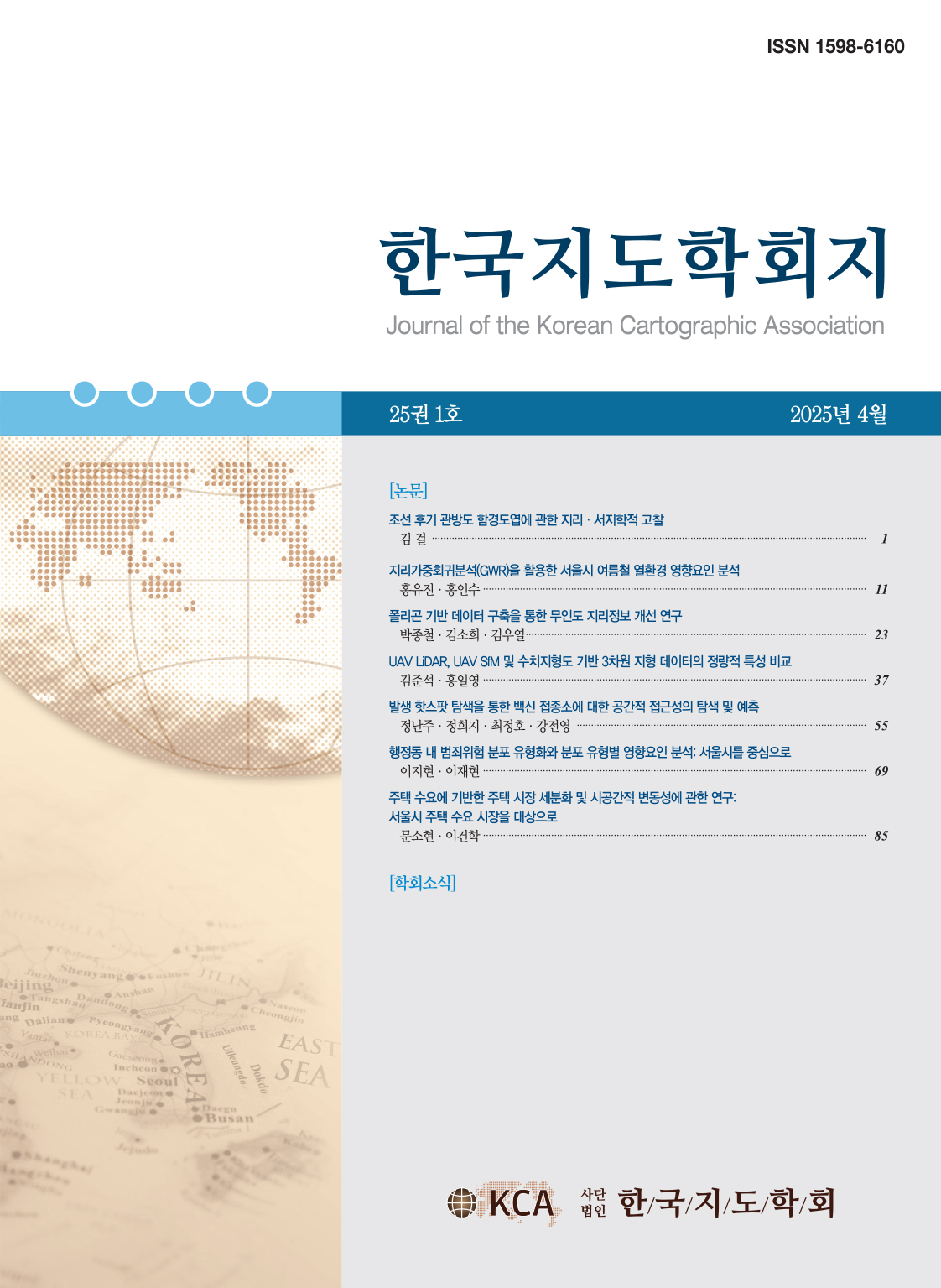Research Article
Abstract
References
Information
The use of underground space is indispensable for the city to develop and to build a hygienic and safe environment. As the development of the underground space progresses, various techniques are applied to acquire and manage information related to the location of facilities, but information based on reliability in the field is insufficient. In this study, the global status of the underground facility information quality rating system was investigated and analyzed in order to accurately manage information on such underground facilities and to enable on-site work based on reliability. As a result of the research, information management In advanced countries, management based on reliability was carried out through a rating system for information on underground facilities, and through this, active field application was possible.
도시가 발전하고 위생적이고 안전한 환경을 구축하기 위하여 지하 공간의 활용은 필수 불가결한 사항이다. 지하 공간의 개발이 진행될수록 시설물의 위치 관련 정보를 취득하고 관리하고자 다양한 기법이 적용되고 있으나, 현장에서 적용할 수 있는 정확한 정보는 부족한 실정이다. 본 연구에서는 이러한 지하시설물의 정보를 정확히 관리하고, 신뢰성에 기반한 현장 작업이 가능하도록 지하시설물 정보 품질 등급제의 세계적 현황을 조사하고 분석하였다. 연구 결과 정보 관리 선진국의 경우 지하시설물 정보에 대한 등급제를 통해 신뢰성에 기반한 관리가 이루어지고 있었으며, 이를 통해 활발한 현장 적용이 가능하였다.
- 건설교통부, 2006, 「제2차 국가GIS 사업 백서」.
- 국토교통부, 2013, 「지하시설물 전산화사업 백서」.
- American Society of Civil Engineers (ASCE), 2002,
Standard Guideline for the Collection and Depiction of Existing Subsurface Utility Data . - American Society of Civil Engineers (ASCE), 2020,
Standard Guideline for Recording and Exchanging Utility Infrastructure Data . - CSA Group, 2020,
CSA S250:20 Mapping of Underground Utility Infrastructure . - National Academies of Sciences, Engineering, and Medicine (NAS), 2009,
Encouraging Innovation in Locating and Characterizing Underground Utilities , Washington, DC: The National Academies Press. - Observatoire National DT DICT, 2016,
Guide D'application De La Reglementation. - Standards Australia, 2019,
AS 5488.1:2019 Classification of Subsurface Utility Information. - The British Standards Institution, 2014,
PAS 128:2014 Specification for Underground Utility Detection, Verification and Location. - The British Standards Institution, 2017,
PAS 256:2017 Buried Assets - Capturing, Recording, Maintaining and Sharing of Location Information and Data - Code of Practice. - Santhakumar, V., 2009,
Evaluation of the Positional Accuracy of Subsurface Utilities, Master of Applied Science, Civil Engineering , Ryerson University. - Singapore Land Authority (SLA), 2017, https://www. sla.gov.sg/
- Zeiss Geoff, 2021, https://geospatial.blogs.com/
- Publisher :The Korean Cartographic Association
- Publisher(Ko) :한국지도학회
- Journal Title :Journal of the Korean Cartographic Association
- Journal Title(Ko) :한국지도학회지
- Volume : 21
- No :1
- Pages :29-37
- DOI :https://doi.org/10.16879/jkca.2021.21.1.029



 Journal of the Korean Cartographic Association
Journal of the Korean Cartographic Association





